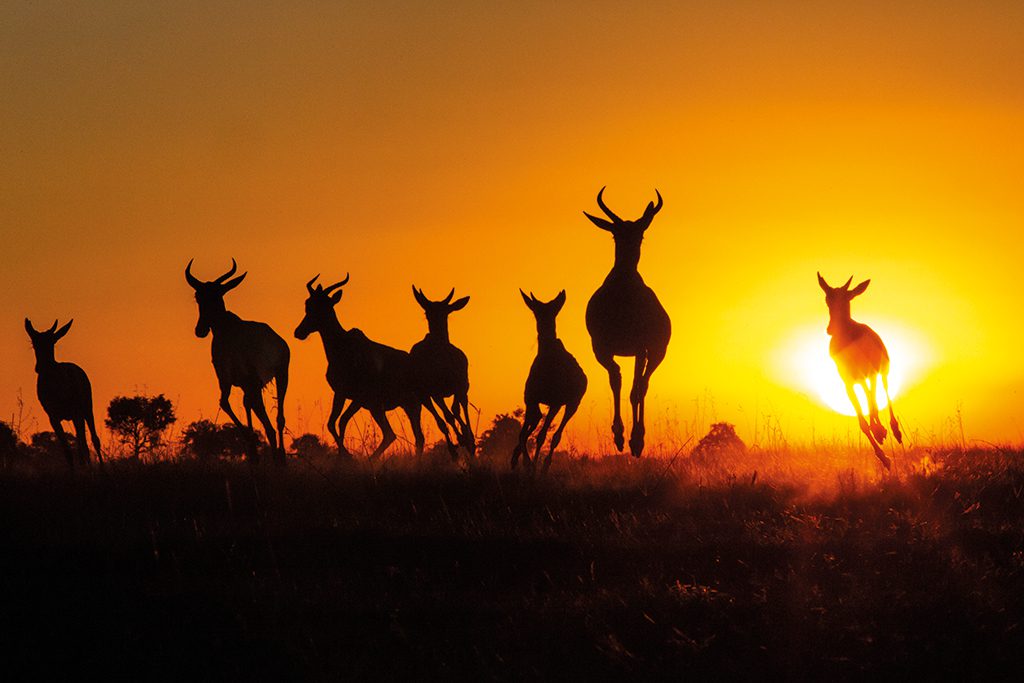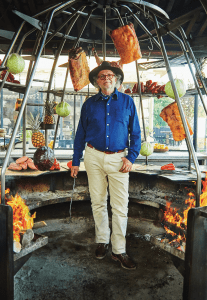Skift Take
The state of luxury is evolving and morphing. And the commonality of those who are forging resonant experiences is that they are looking outside of some of the tried-and-true formulas, mining heightened sensory territories that evoke something deeper in guests.

On Experience
Colin Nagy, a marketing strategist, writes this opinion column for Skift on hospitality and business travel. On Experience dissects customer-centric experiences and innovation across the luxury sector, hotels, aviation, and beyond. He also covers the convergence of conservation and hospitality.
You can read all of his writing here.
Francis Mallmann is an unlikely culinary hero. He’s a Patagonia-based chef who frequently retreats to a remote Argentine island to think, study, and cook over beautiful, lovingly crafted open-air flames.
He was propelled from South American cult figure to global culinary fame with the first season of Netflix’s Chef’s Table. A true bon vivant, on the show he spun a tale of his background, having been subtly rebuffed by French culinary society and finding his precise methodology and approach to cooking — and life.
His cooking is deeply sensory: Think beautifully crafted fires with varying types of wood for specific types of heat. How he talks about cooking is not unlike how a shaman talks about gently conjuring a spirit. Imagine meat cooking in adobo style, steak sizzling on a plancha-style flat top or huge chickens suspended on wire, cooking slowly. Chef Mallmann even collaborated with the outdoors lifestyle brand Best Made Company on a grill described thusly: “a veritable altar to the flame, it enables home cooks and chefs alike to sear, simmer, smoke, and roast simultaneously.”
Defining Luxury Today
There’s endless debate over what the future of luxury is. Strategy decks are overloaded with experiential talking points for executives. Mallmann’s approach — following his sincere and clear vision of what he wants to do, yet informed by classical training — represents what modern luxury hospitality aspires to be: deeply real and driven by passion but not necessarily fussy or overcomplicated. A meal prepared by Mallmann truly is a heightened sensory experience: the cooking over the open flame, the convivial nature of his dinners, and also how the seasons or weather is actually factored in the cooking. Mallmann frequently cooks outside in snow or in the moody weather on his island in Argentina.
He’s a living example of what people are craving out of travel or culinary experiences: the rejection of the perfect white-tablecloth experience or strict operating procedures in favor of something instinctual and thoughtful — with a ton of soul.
It isn’t just the palate that can be inspired by this approach. Some luxury brands are trying to call on other senses and tap into things that other brands haven’t touched.
A New Day
A notable example is Belmond’s First Light initiative. Instead of focusing on the things that other brands are competing over, this luxury hospitality company is making the first light of the morning a meaningful differentiator. The brand hosts exquisitely executed nature walks, complete with Leica binoculars, at dawn. The locations include Botswana, Mallorca, and Cape Town among others, each with one-of-a-kind hues distinct to their geography. It’s a brand playing in an uncrowded space that evokes emotion and optimism. It would be easy to mess up, but in this case, the concept is flawlessly put together and serves as an interesting positioning tool.
Sound and smell can also be beautiful differentiators. In a piece featured in Afar magazine, Ryan Knighton, a blind writer, wrote about going on safari in Zimbabwe at Malilangwe Wildlife Reserve, based at Singita’s Pamushana Lodge, and coming back with a unique perspective. In the article, he recalled an encounter with an elephant, narrated by a guide. “Then, squish, squish, it stepped off into the bush and was gone. An odor followed. Wet earth, like parched land after a first rain. Later, [guide] Alan would explain that I had smelled the elephant’s method of cooling and hygiene. Mud retains moisture, so elephants coat themselves to stay cool. When it dries, they’ll scrape themselves against leadwood or baobab trees, the hardened earth taking parasites from their skin. An elephant waxing. I hadn’t seen that, but I’d smelled my way into something.”
Knighton’s senses were so sharpened that everything, the hiss of the bush, the smell of the disturbed earth, and the seemingly mundane movements of animals were distinctly vivid and beautiful. While safari is more typically first and foremost a visual experience, the impact of the sound and smell of the experience, even if you are not vision impaired, is powerful and a luxury in and of itself.
Smell is also on display with some of the most detail-oriented hospitality brands: The Langham has a custom scent in its lobby, described as “contrasting notes of bitter ginger flower and hints of honeyed pineapple. The scent ends with soft florals of fresh lilac and violet.” Singapore Airlines has a signature scent running through its experience, including the perfume worn by flight attendants and scent-infused hot towels served onboard, not to mention the cabin itself. End to end, it adds an emotional and often subconscious touch to the experience.
As innovators redefine what luxury means, the common ground is the ability to engage guests in a meaningful way. And inspire travelers not just to go but also pine to return.
Have a confidential tip for Skift? Get in touch
Tags: belmond, luxury, On Experience
Photo credit: Pictured are antelope at dawn at Belmond Eagle Island Lodge in Botswana. Belmond partners with Leica to host First Light nature walks. Hospitality brands can create luxury experiences for guests with offerings that deeply engage the five senses. Belmond

